Download the paper here or read it on the Journal of Tourism History website
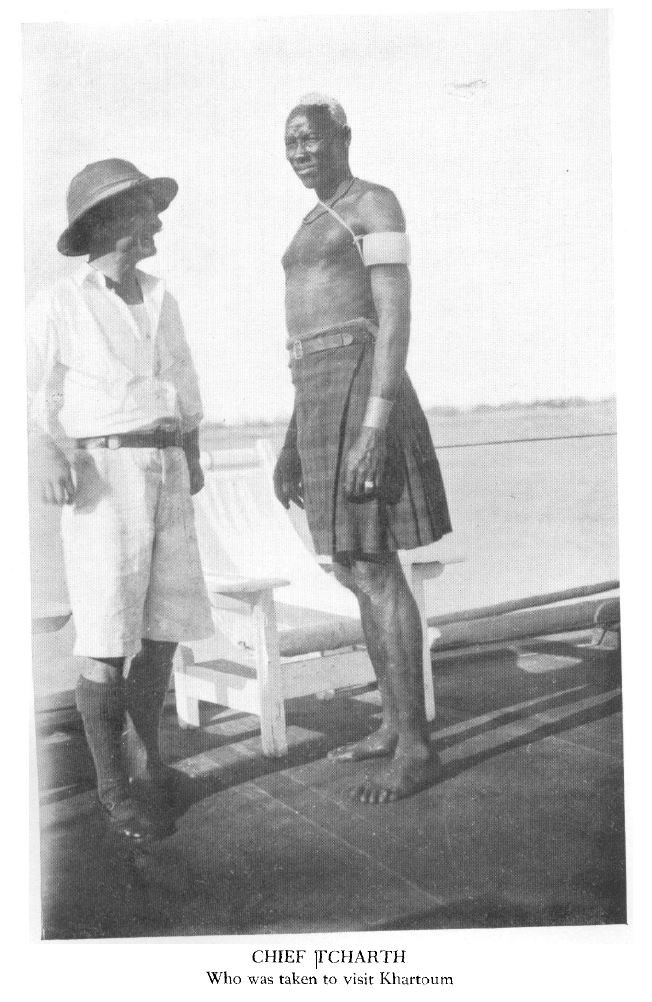
The Story Of Fergie Bey (Macmillan, 1930), p. 126.
Introduction
In August, 1933, twenty-eight Nuer chiefs from the borderlands of South Sudan and Ethiopia, together with some of their wives, a ‘Leopard Skin Chief’, and four chiefs’ police, visited the Khartoum zoological gardens, where they fed sugar to Rudolph, the hippopotamus, and saw the lion and the kangaroo. ‘The kangaroo completely defeated them’, F. D. Corfield, who accompanied the chiefs, wrote; ‘one chief came up to me and said that he was certain it was not an animal although he could not explain what it was’. The trip to the zoo ended the first day of their three-day sightseeing itinerary, which included a ‘grand tour’ of Khartoum and Omdurman and visits to a model dairy farm, the Sudan Light and Power Company’s Power House and water treatment plant, the armoury, the aerodrome, and the palace.1
The itinerary had been planned by the Assistant Civil Secretary, who modelled the tour on tourist guide-books and the places that new colonial officials were taken to see as an ‘introduction to life in Khartoum’. Corfield, District Commissioner for the Eastern Nuer and a friend of the anthropologist E. E. Evans-Pritchard, acted as their guide. This was nothing out of the ordinary. Chiefs were prominent individuals. Their position depended on their place within the colonial government. What was out of the ordinary, strange even, was that this sightseeing tour was designed to terrify and demoralise. In her account of filming Stampede (1929) in Darfur and southern Kordofan, Stella Court-Treatt provided a description of a punitive tour related to her by an official serving in Sudan: after an attack on the police post at Duk Fayuil in 1928, he told her,
the Government had fifty of the most truculent [Nuer chiefs] taken up to Khartoum, where a proper respect for the Government was instilled into their souls by taking them round, pointing out to them aeroplanes, fort, and armoury, and the strength and majesty of the Government generally.1
If the itinerary in 1933 borrowed from Cook and Baedeker, and visited many attractions, this did not mean it was without intimidation and experiences meant to provoke terror. Instilling ‘a proper respect for the Government’ meant making the threat of colonial violence credible and compelling.
This essay tells the story of diplomatic sightseeing in colonial Sudan, beginning in 1901 with the arrival in Omdurman of an envoy sent by a prominent Malual Dinka chief, which tied Northern Bahr el-Ghazal to the colonial centre, and ending in 1933 with a sightseeing visit to Khartoum and a colony that was tangled in ways that colonial administrators were anxious to detach and separate.
Notes
1 F. D. Corfield, ‘Note on visit of Eastern Jekang [Gaajak and Gaajok] Chiefs to Khartoum, August, 1933’, dated 22 August 1933, Juba Archive, UNP/66.G.1/3.
2 Stella Court Treatt, Sudan Sand: filming the Baggara Arabs (London: George G. Harrap, 1930)
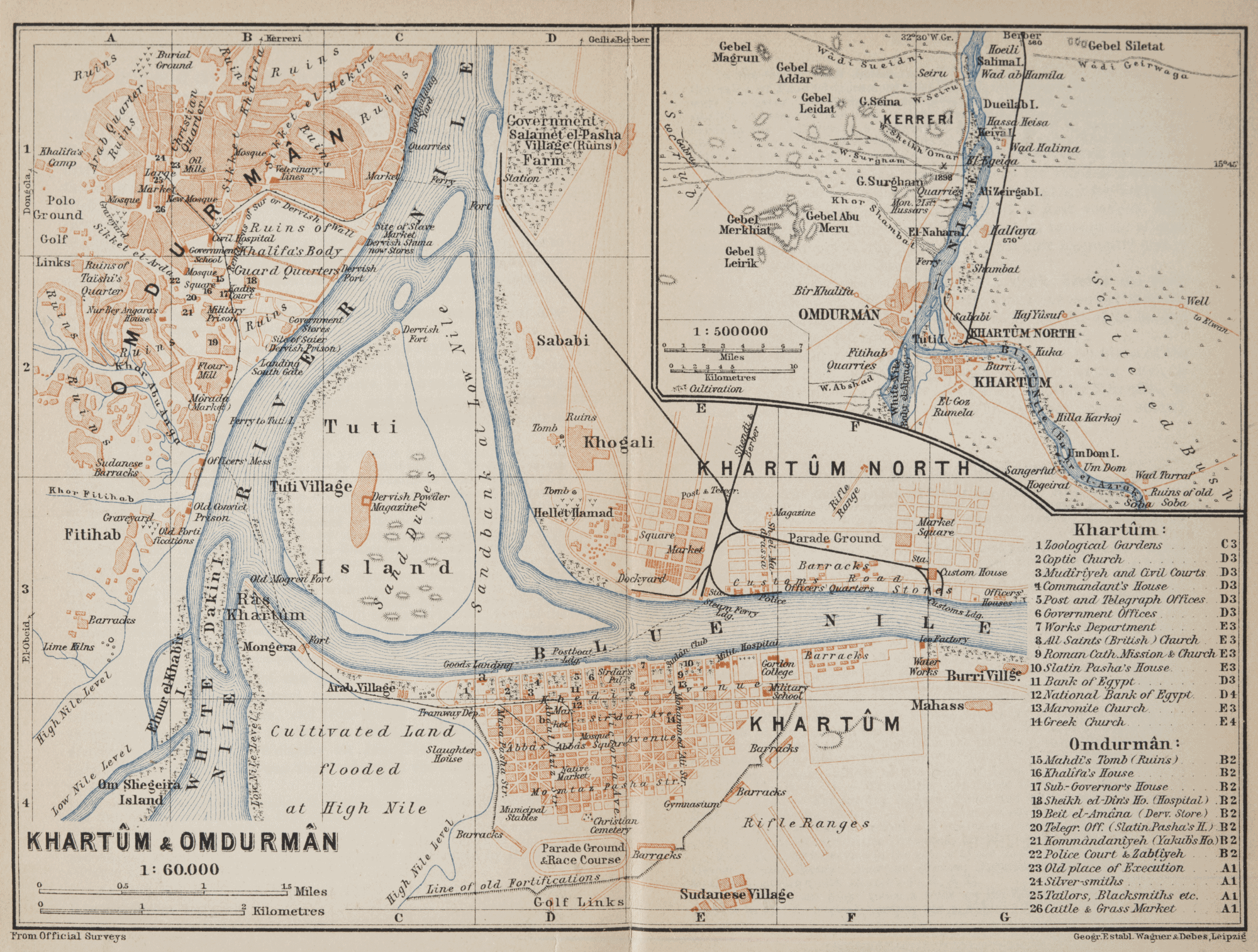
Khartum and Omdurman. Karl Baedeker, Egypt and the Sudân: Handbook for Travellers (Leipzig: Karl Baedeker, 1908), p. 411.
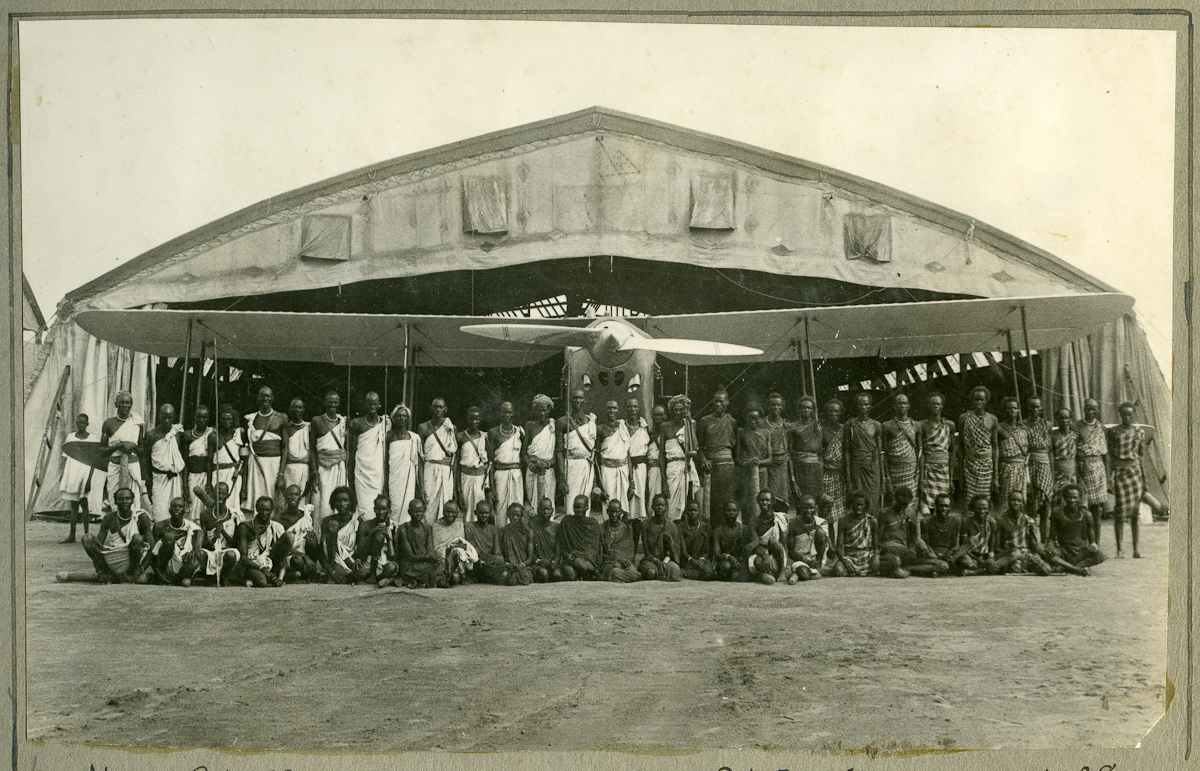
"Nuer chiefs", RAF Khartoum 1928, standing in front of biplane outside a hanger | Photographer: Percy Coriat | Pitt Rivers Museum (2007.34.3.2)
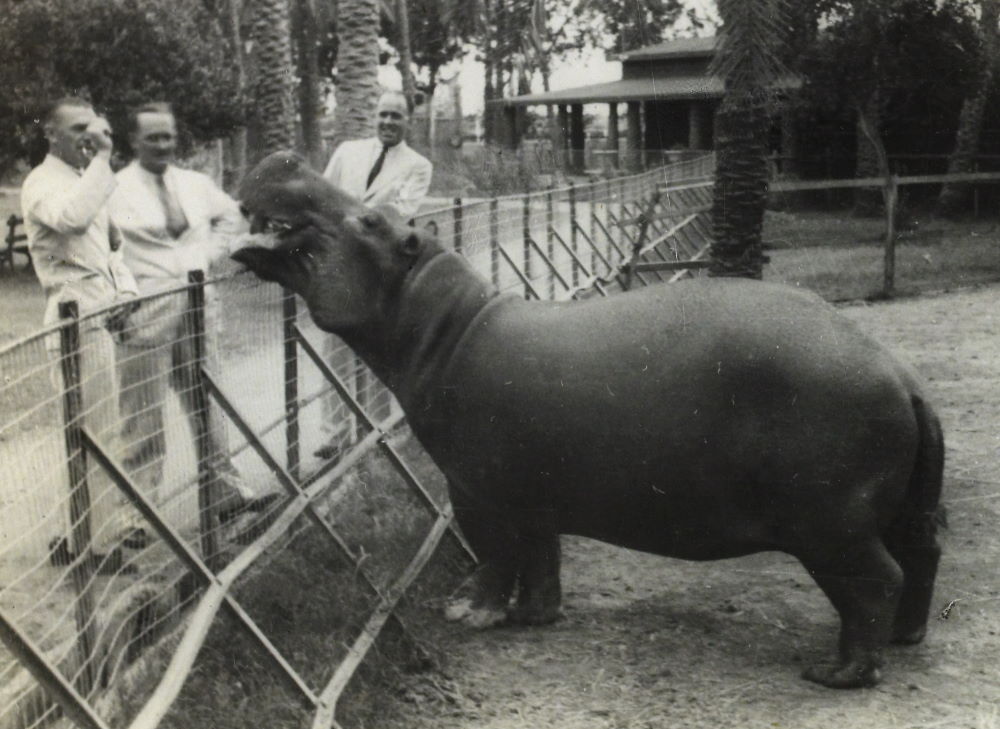
British officials previous feeding a hippopotamus at Khartoum zoo. Left to right: C.C. Warren, Steamers Inspector, Railways department; W. Pollock; P.C. Bryson | Durham University, Sudan Archive (SAD.D9/34)
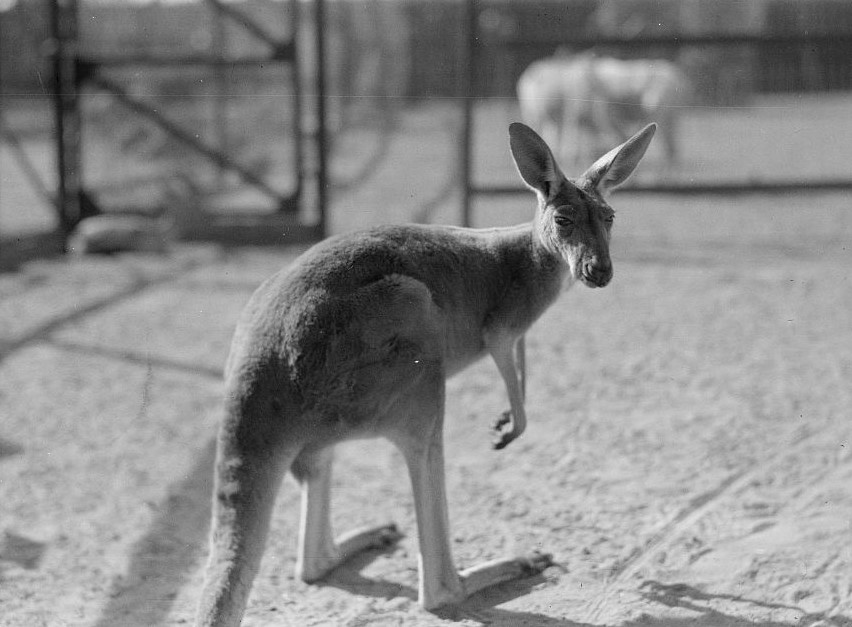
Kangaroo, Khartoum Zoo (1936) | Photo by G. Eric Matson, American Colony Photo Dept., taken on a flight with Imperial Airways on a World Trunk route following the Nile from the Delta to the Victoria Nile and the Victoria Lake | Library of Congress
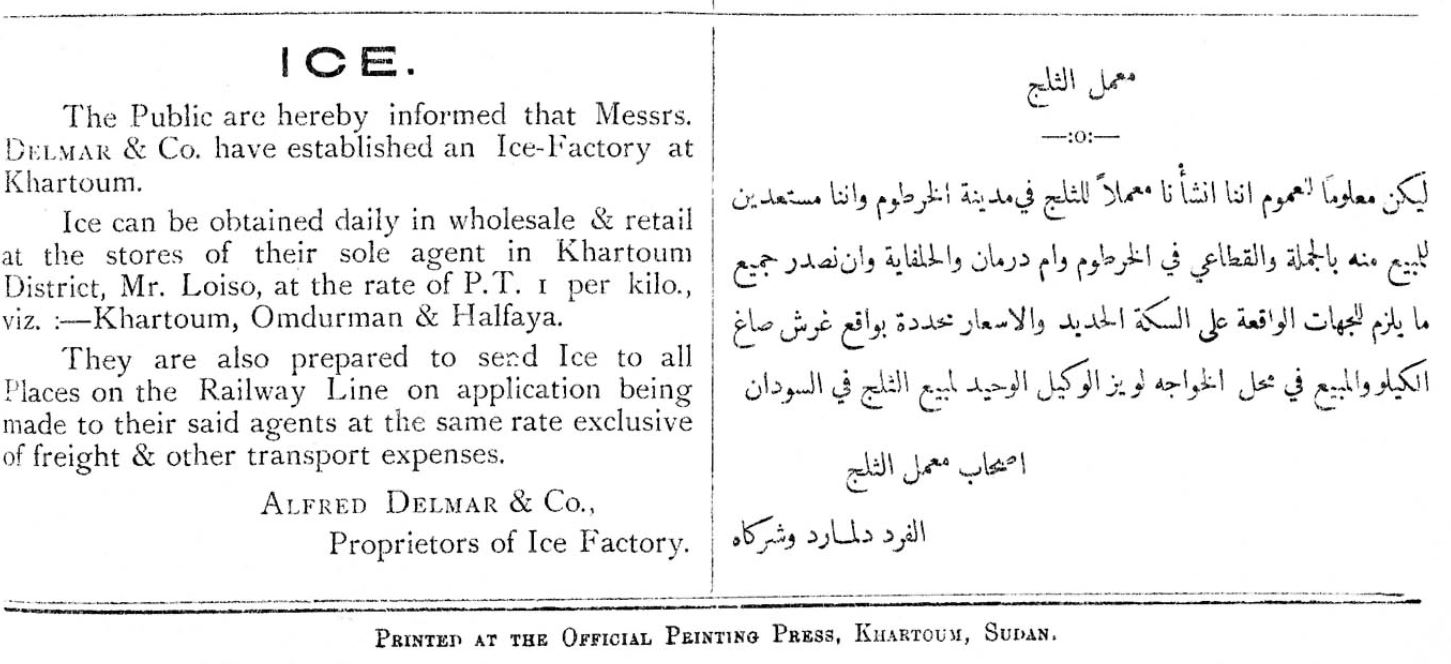
Advertisement, Sudan Gazette, No. 30, p. 5
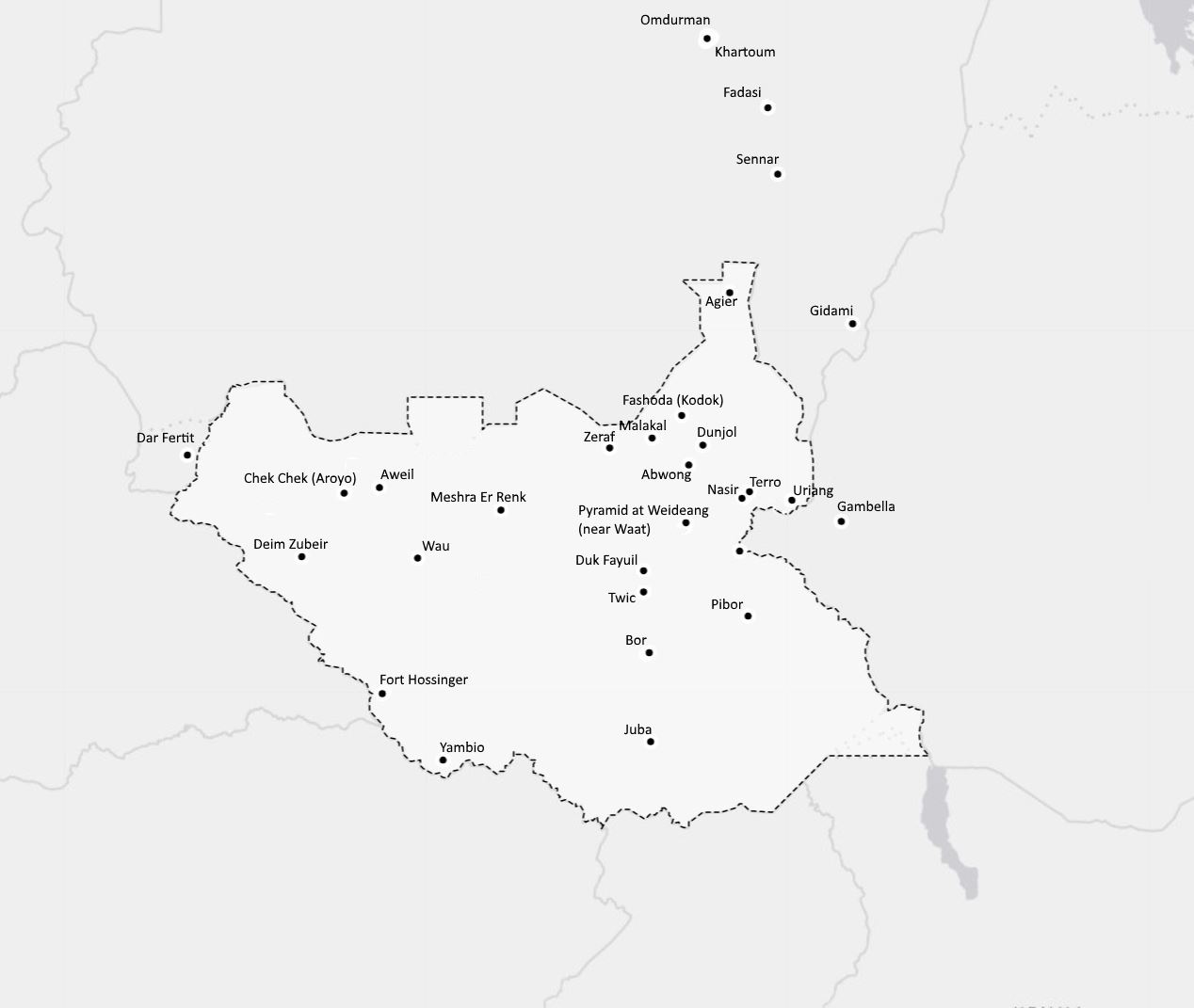
Map of locations mentioned in the text